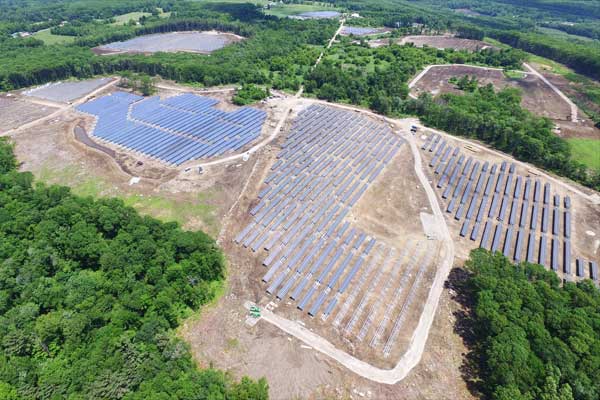The US reached its utility-scale solar goal, three years ahead of schedule thanks to the SunShot Initiative, despite the skepticism of the current government on renewable energy.
According to ArsTechnica, the US Department of Energy (DOE) said utility-scale solar prices had hit $0.06/kWh ($1.00/watt) in Kansas City, the primary location for projections.
That is three years ahead of the original 2020 SunShot Initiative target.
The DOE created the SunShot Initiative in 2011 to help reduce costs and make solar energy more affordable at certain price points by 2020.
Research funding for panel efficiency and market competition outside of forces within the DOE were critical in declining solar panel costs, ArsTechnica said.
In six years since the SunShot Initiative started, prices have fallen rapidly. Utility-scale solar costs in 2011 were $0.28/kWh, with residential prices at $0.52/kWh, and commercial prices at $0.52, Utility Dive said.

From the Department of Energy: “This photo shows the construction phase of a 16.5 MW DC solar farm built in Oxford, MA. This 130-acre property was previously known as the largest piggery in Massachusetts.”
The SunShot Initiative is aiming for $0.03/kWh for utility-scale panel prices, $0.04/kWh for commercial, and $0.05/kWh for residential by 2030.
“With the impressive decline in solar prices, it is time to address additional emerging challenges,” said Acting Assistant Secretary For Energy Efficiency and Renewable Energy Daniel Simmons in a DOE statement.
However, despite these goals set out for solar now by the DOE for 2030, the current Trump Administration is dubious on the potential of renewable energy.
Bloomberg said Trump’s 2018 budget plans for a 71% cut in DOE funding for solar power of $70 million.
Meanwhile, Acting Assistant Secretary Daniel Simmons when previously working for the Institute for Energy Research said wind and solar electricity is “is more expensive and will increase the price of electricity.” The Institute for Energy Research also called for the elimination of the DOE.
Although it’s the uncertainty, the SunShot program keeps on going and strives towards new goals in advancing solar energy.













Comments